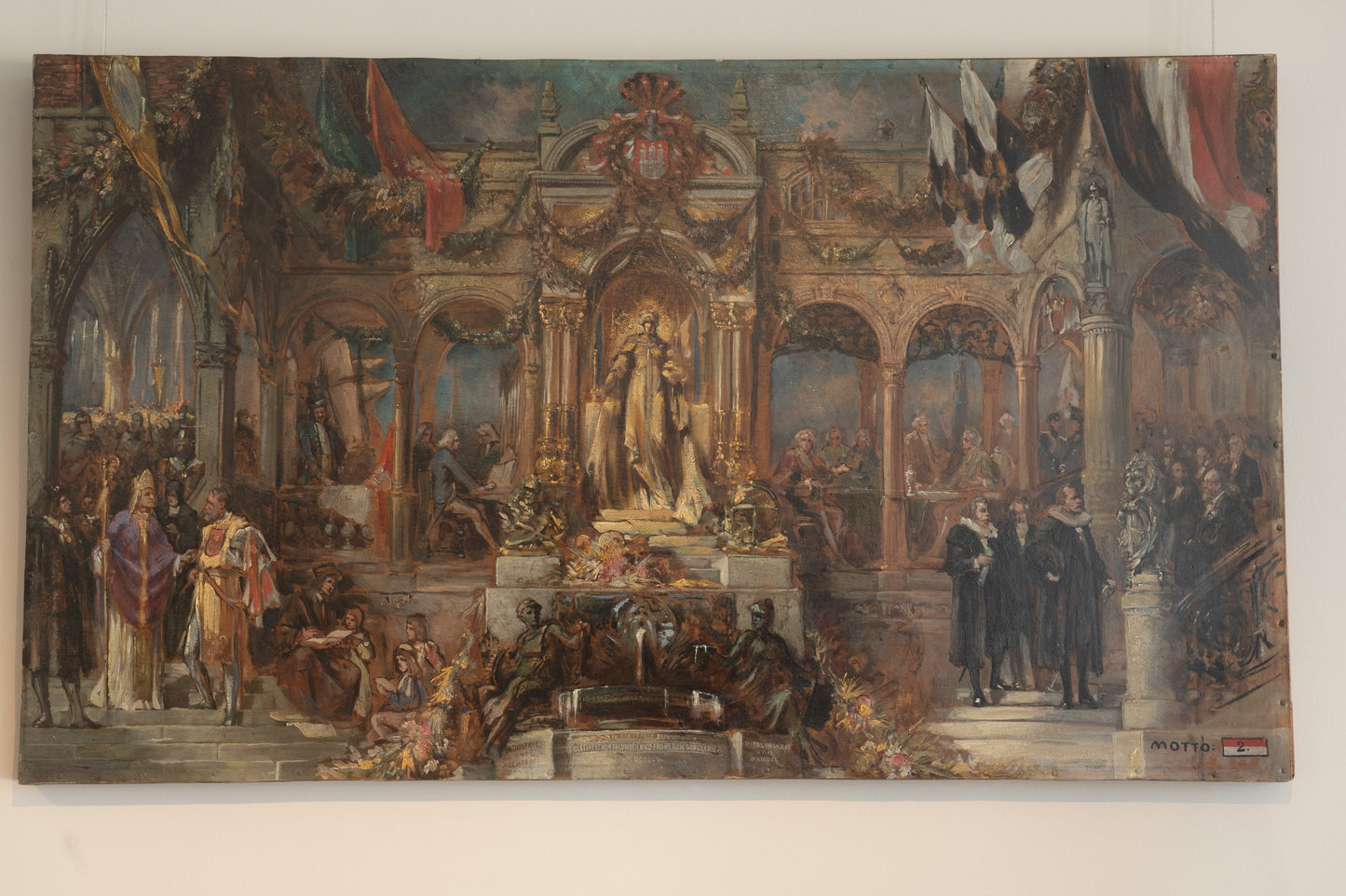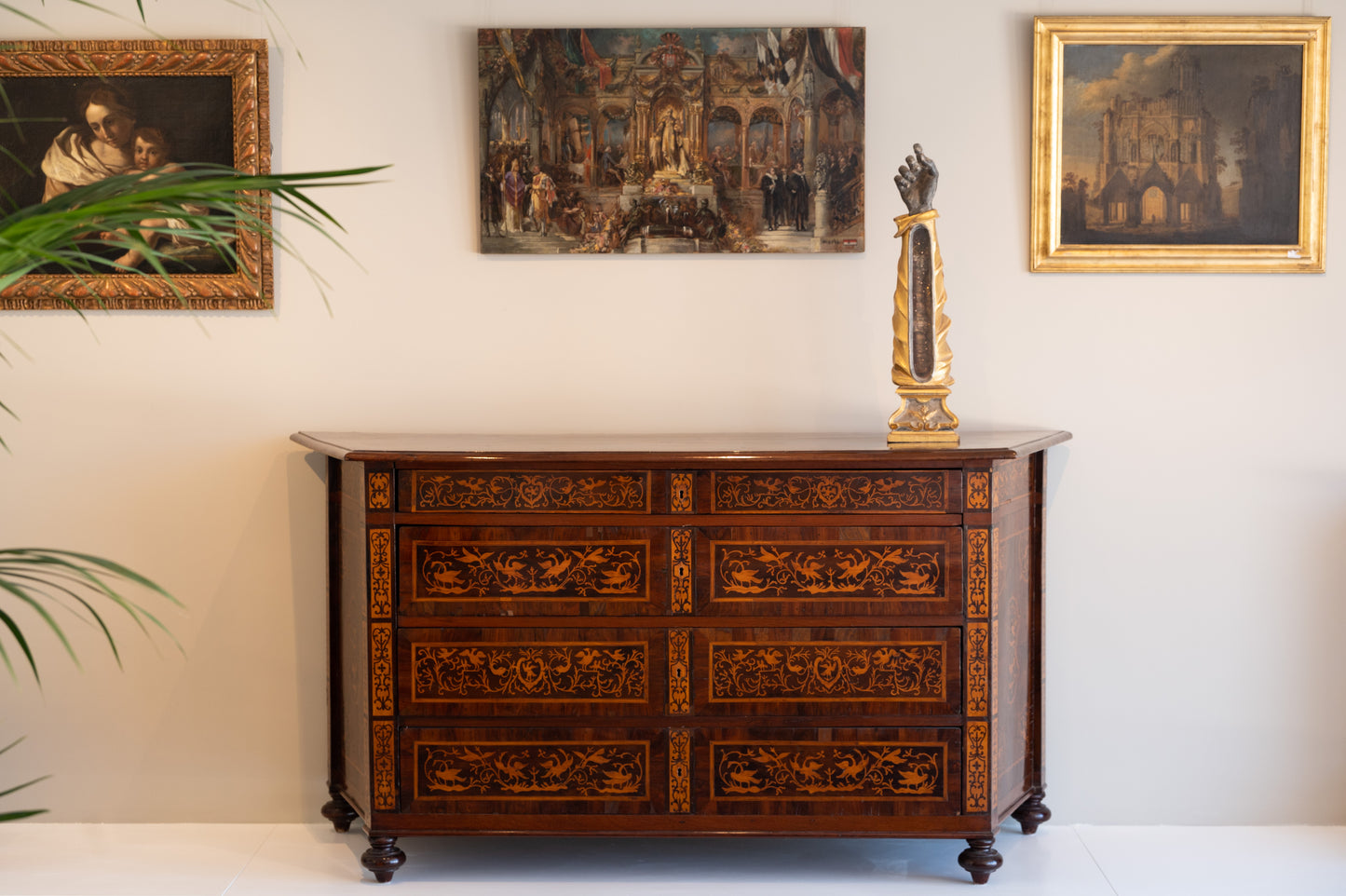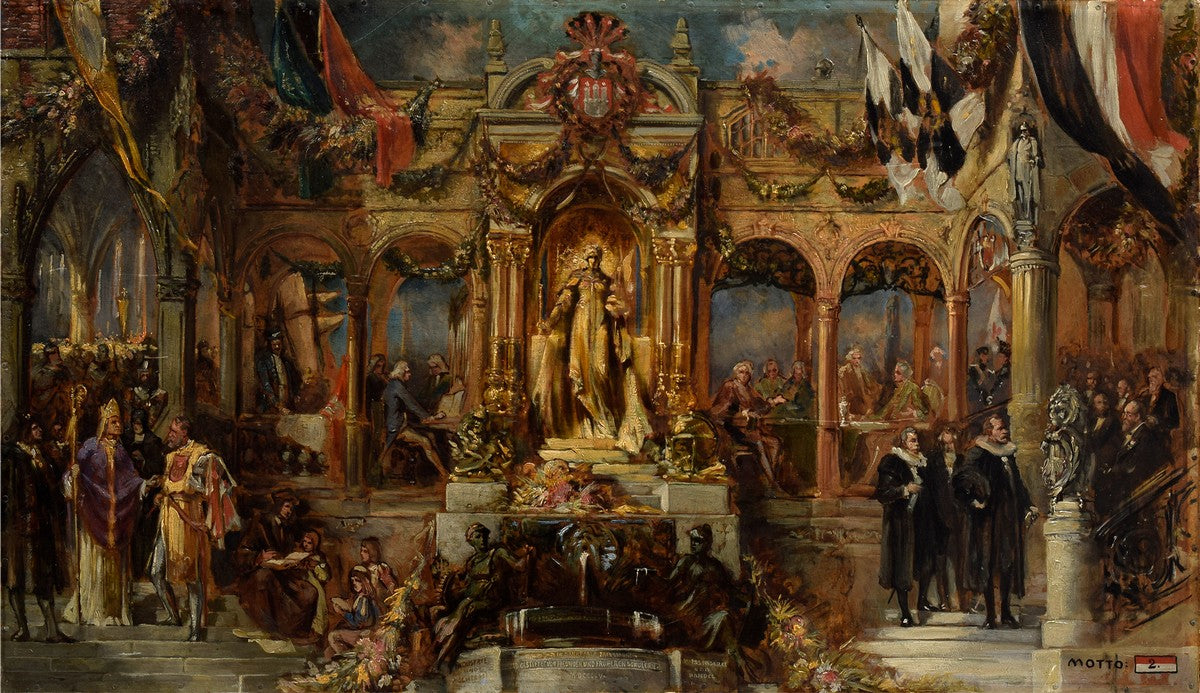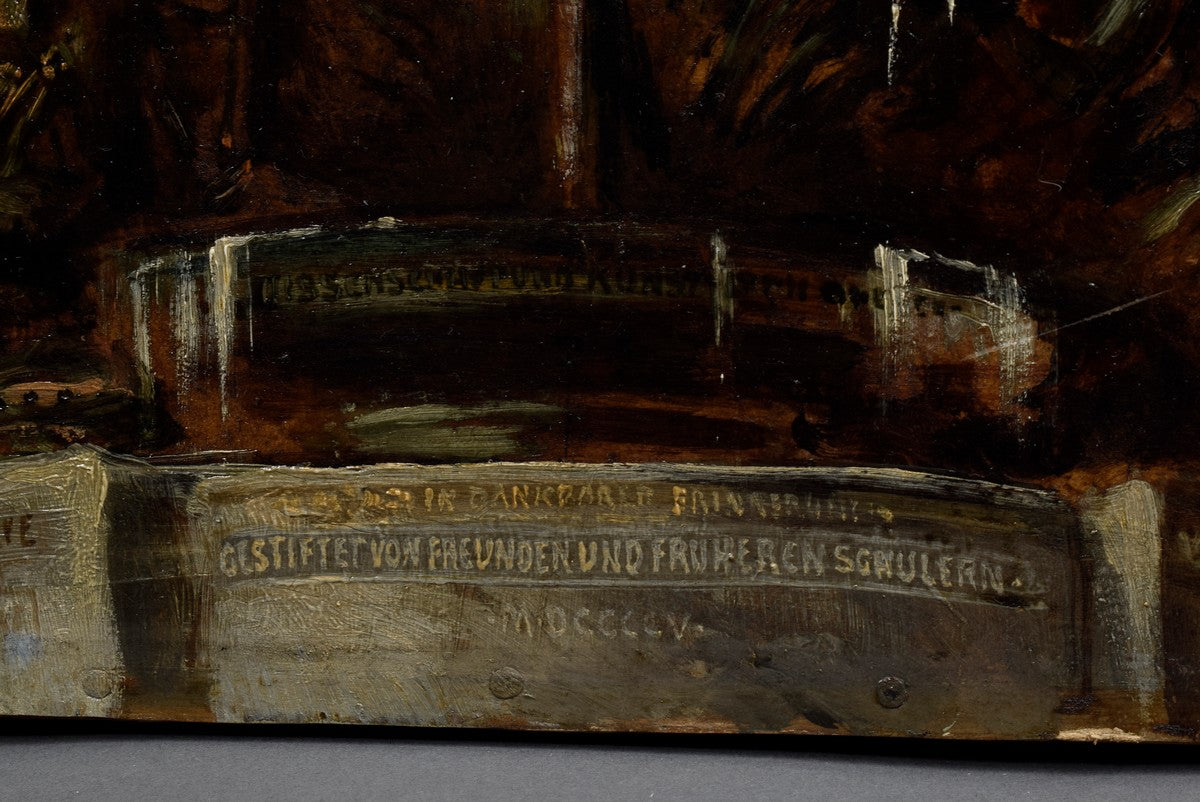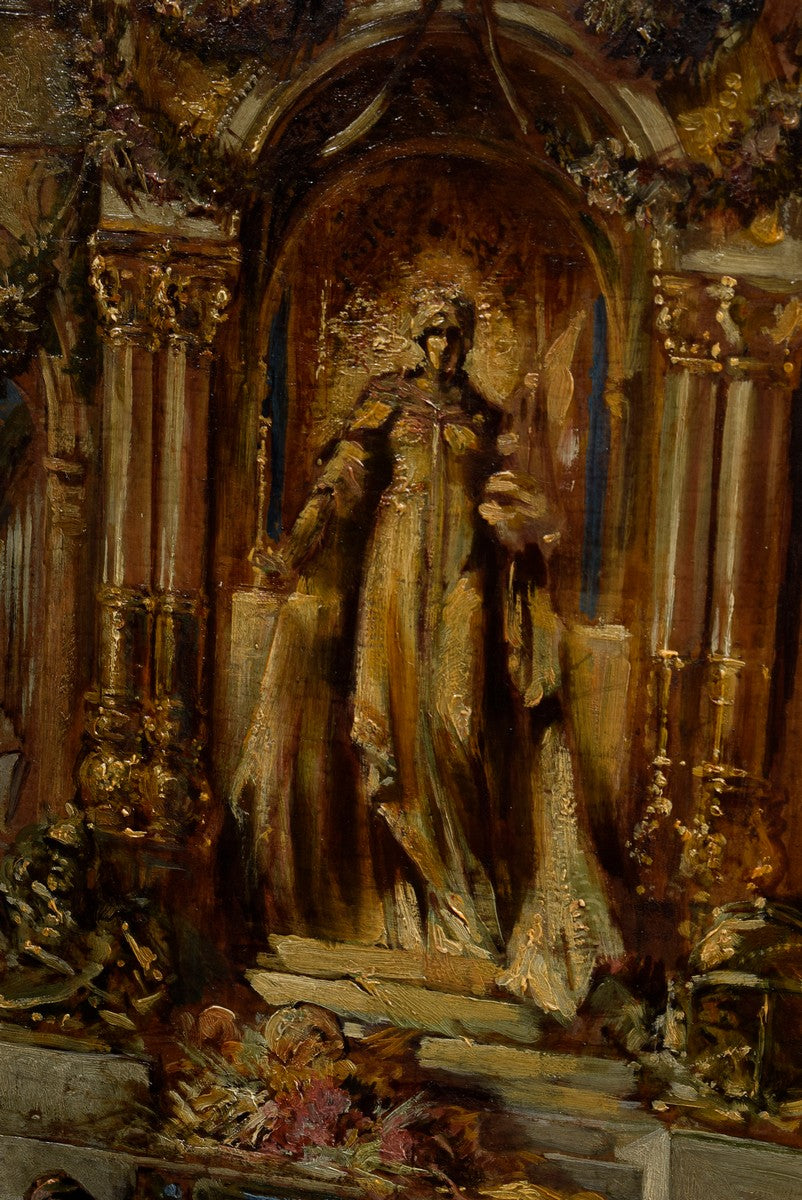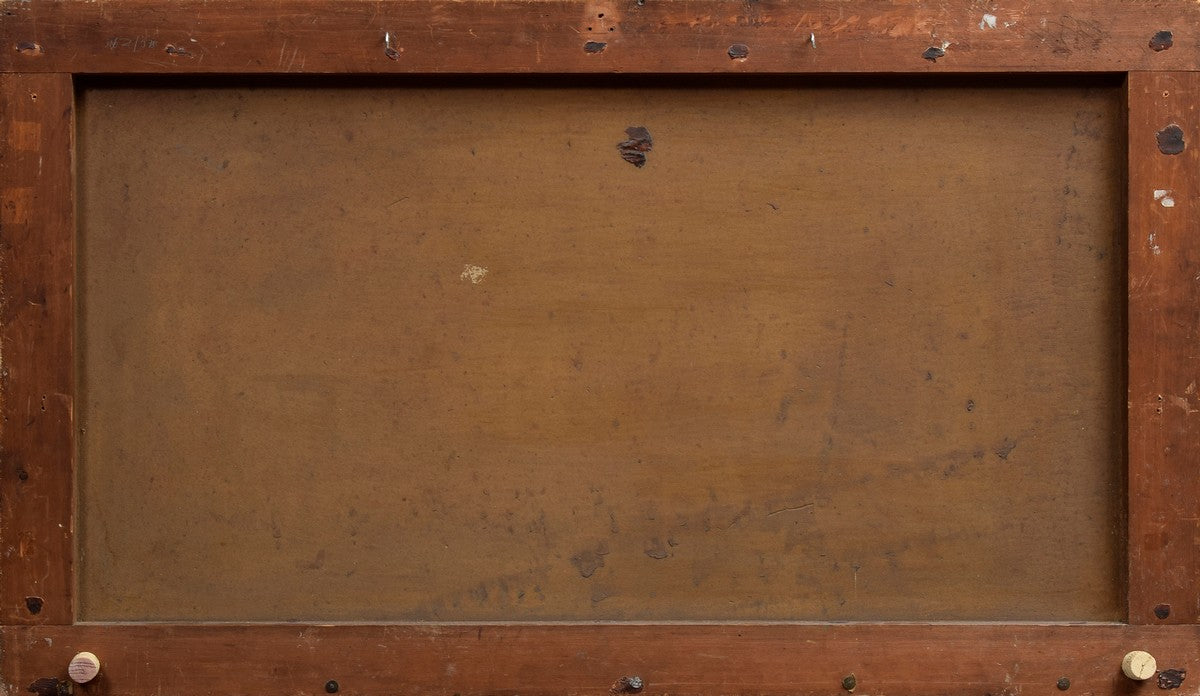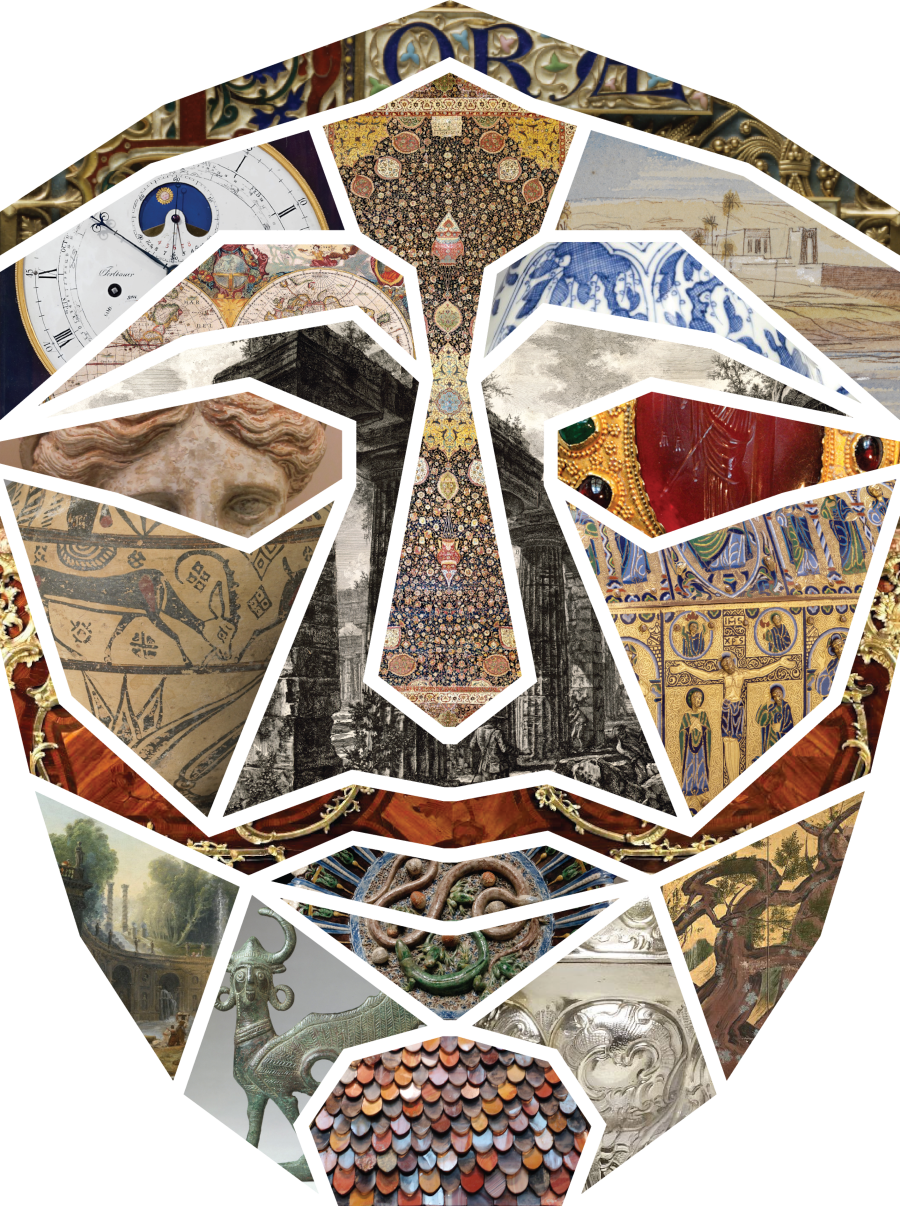Artemisia Fine Arts & Antiques Ltd
Hugo Vogel Hamburg City Hall Mural Hammonia 1905 - Bozzetto Oil Wood 55.5x96.5cm
Hugo Vogel Hamburg City Hall Mural Hammonia 1905 - Bozzetto Oil Wood 55.5x96.5cm
Couldn't load pickup availability
Design for a Mural of the Hamburg City Hall 'Allegory of Hammonia Surrounded by Hamburg Citizens in the Mirror of the Centuries', 1905
An exceptional and museum-quality bozzetto (preliminary design) by Hugo Vogel (1855-1934) for a monumental mural project for Hamburg City Hall. This significant 55.5 x 96.5 cm oil on wood painting, inscribed 'Motto 2', represents an unexecuted competition study for what would have been a major civic commission. The allegorical composition depicting Hammonia (the personification of Hamburg) surrounded by Hamburg citizens through the centuries demonstrates Vogel's mastery of large-scale compositional design and his engagement with civic and historical themes. This rare bozzetto represents an exceptional acquisition opportunity for collectors of German 19th/early 20th-century art, architectural studies, or those seeking historically significant works documenting important civic art projects.
Hugo Vogel - German Academic Painter
Hugo Vogel (1855-1934) stands as an important German academic painter of the late 19th and early 20th centuries. Working primarily in historical and allegorical subjects, Vogel created paintings and designs for monumental projects that combined technical mastery with sophisticated compositional skills. His work exemplifies the academic tradition's emphasis on drawing, composition, and the ability to handle complex multi-figure compositions. Vogel's participation in major civic commissions demonstrates his professional standing and the recognition his work received. Artists like Vogel played crucial roles in creating the visual culture of Imperial and Weimar Germany through their work on public buildings, monuments, and civic projects.
Hamburg City Hall - Architectural Context
Hamburg City Hall (Hamburger Rathaus), completed in 1897, represents one of Germany's most important civic buildings. The neo-Renaissance structure features elaborate interior decoration including numerous murals, sculptures, and decorative programs celebrating Hamburg's history, commerce, and civic virtues. The building's decoration involved numerous artists competing for commissions to create works for various spaces. This bozzetto documents Vogel's participation in this important decorative program, even though his design was not ultimately executed. The Hamburg City Hall context adds significant historical interest and connects the work to one of Germany's most important civic buildings.
Allegory of Hammonia - Subject and Symbolism
Hammonia, the personification of Hamburg, appears frequently in the city's art and iconography. The allegorical figure represents Hamburg's identity, history, and civic virtues. Vogel's design showing Hammonia surrounded by Hamburg citizens 'in the mirror of the centuries' suggests a complex composition depicting Hamburg's history from medieval times through the modern era. This ambitious subject required sophisticated compositional skills to organize multiple figures, historical periods, and allegorical elements into coherent, readable design. The allegorical approach reflects the period's taste for symbolic, historically-grounded civic art.
1905 Dating - Historical Context
The 1905 dating places this work during the height of Imperial Germany, when civic pride and historical consciousness inspired ambitious decorative programs for public buildings. The early 20th century saw tremendous investment in civic architecture and decoration as German cities competed to create impressive public spaces. Competition designs like this document the artistic processes behind these projects and the multiple proposals considered before final selections. The 1905 date also places the work near the end of Vogel's career, representing his mature artistic vision.
Bozzetto - Preliminary Design
As a bozzetto (Italian term for preliminary sketch or model), this work represents an important stage in the artistic process for large-scale projects. Bozzetti allowed artists to work out compositional problems, demonstrate their concepts to patrons or competition juries, and refine their ideas before executing final works. These preliminary designs are valued by collectors for the insight they provide into artistic process and for their often more spontaneous, direct character compared to finished works. Bozzetti for unexecuted projects are particularly interesting as they document 'what might have been' and preserve artistic visions that were never fully realized.
Competition Study - Professional Context
The description as competition study indicates this work was created for a formal competition to select designs for the Hamburg City Hall mural program. Artistic competitions were standard practice for major civic commissions, allowing multiple artists to propose designs and patrons to select the best proposals. Competition entries document the artistic culture of the period and the high standards required for major commissions. Even unexecuted competition designs by important artists have significant value as they demonstrate the artist's capabilities and ambitions.
'Motto 2' Inscription - Documentation
The 'Motto 2' inscription suggests this was one of multiple proposals Vogel submitted, or that the competition used motto systems (where artists submitted anonymously under mottos to ensure impartial judging). This inscription adds documentary interest and connects the work to specific competition procedures. The verso inscription, though difficult to read, may provide additional information about the work's history or Vogel's intentions.
55.5 x 96.5 cm - Substantial Scale
At 55.5 x 96.5 cm (approximately 21.9 x 38 inches), this bozzetto offers substantial size that allowed Vogel to work out compositional details while remaining manageable for presentation and evaluation. The horizontal format suits mural design, suggesting the intended location's architectural character. This scale allows the multi-figure composition to be appreciated while the work remains suitable for collection and display.
Oil on Wood - Traditional Medium
The execution in oil on wood demonstrates traditional techniques for bozzetti and studies. Wood panels provide stable, durable support that doesn't require stretching like canvas. Oil paint's versatility allowed Vogel to achieve the color harmonies, tonal values, and compositional clarity needed to communicate his design effectively. The combination of oil and wood ensures the work's preservation and allows detailed examination of Vogel's technique.
Unexecuted Design - Historical Interest
The fact that this design was not executed adds poignant historical interest. Unexecuted designs document artistic visions that were never fully realized, preserving 'alternative histories' of what major projects might have looked like. For collectors, unexecuted designs offer opportunities to acquire works related to important projects at more accessible prices than executed commissions while maintaining significant historical and artistic interest.
Investment Value and Collectibility
Bozzetti and competition designs by important German academic painters for major civic projects represent solid investment opportunities. The combination of Vogel's significance, the Hamburg City Hall context, the allegorical subject, 1905 dating, bozzetto status, substantial scale, and the work's documentation of an important artistic process creates appeal among collectors of German art, architectural studies, bozzetti, and civic art history. As authentic period designs for major projects become scarcer, quality examples show consistent market performance.
Display and Presentation
This bozzetto deserves placement where its historical significance and artistic quality can be appreciated. The horizontal format and substantial size suit various settings. The work's character as preliminary design adds interest for viewers who appreciate artistic process. Proper framing and lighting reveal Vogel's compositional skills and technique while climate-controlled environment ensures preservation.
Cultural and Historical Significance
This bozzetto embodies Imperial Germany's civic pride, the academic tradition's sophisticated compositional skills, and the artistic processes behind major public art projects. It documents Hamburg's cultural history and the competition for one of Germany's most important civic buildings. The work connects viewers to this significant period while demonstrating how artists developed complex allegorical compositions for public spaces.
Collecting Context
This bozzetto appeals to collectors of German 19th/early 20th-century art, Hugo Vogel, architectural studies, bozzetti, civic art, Hamburg history, and those seeking works documenting important artistic processes and unexecuted projects. It would enhance private collections, corporate holdings, or institutional settings where the work can contribute to understanding of German civic art and artistic practice.
Available for viewing by appointment at Artemisia Fine Arts & Antiques Ltd, Malta. We provide expert consultation, provenance research, authentication services, conservation coordination, insurance valuation, and international shipping with specialized fine art handlers. This Hugo Vogel bozzetto represents an exceptional acquisition opportunity. Serious inquiries from qualified collectors welcome.
Share
